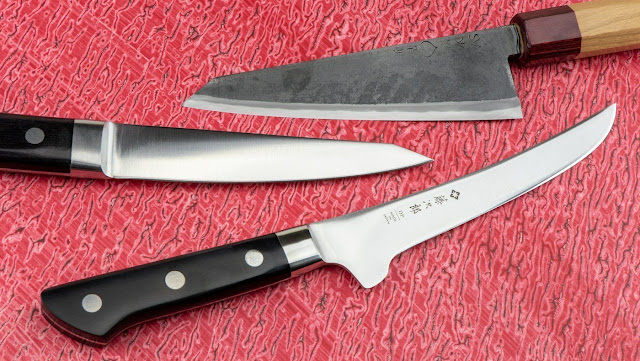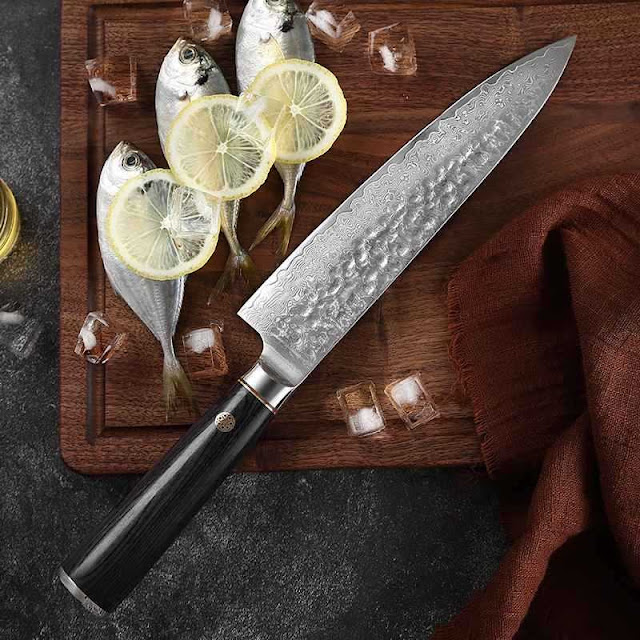Finesse in Filleting: The Art and Science of Filleting Knives
In the realm of culinary mastery, the filleting knife emerges as a specialized tool, prized for its ability to transform a whole fish or piece of meat into delicate fillets. This exploration into filleting knives unveils the unique features, applications, and craftsmanship that make this blade an indispensable asset in the hands of chefs and home cooks alike.
The Anatomy of Precision:
Filleting knives are distinguished by their long, thin blades, typically ranging from 6 to 9 inches. The blade is designed to flex, allowing for seamless maneuvering around bones and contours. This flexibility is key to achieving thin, uniform fillets without unnecessary waste.
Tailored Blades for Every Task:
The versatility of filleting knives is enhanced by the variety of blade types available. A classic narrow blade is perfect for precision work on smaller fish, while a broader blade is ideal for handling larger catches. Consider the type of filleting tasks you'll be undertaking to choose the blade width that suits your needs.
Material Excellence:
Filleting knives demand high-quality materials to meet the challenges of delicate fillet work. Opt for blades made from high-carbon stainless steel for the perfect balance of sharpness, durability, and corrosion resistance. Some knives feature additional treatments like tapering or specialized edge grinds to enhance their filleting prowess.
Flexibility for Flawless Fillets:
The hallmark of a good filleting knife is its flexibility. This attribute allows the blade to contour the shape of the fish or meat, minimizing waste and ensuring each fillet is clean and precise. Look for knives with a good balance of flexibility and stiffness based on your filleting preferences.
Handles Designed for Control:
The handle of a filleting knife is crafted for optimal control during delicate fillet work. Ergonomics play a crucial role, providing a comfortable grip that allows for intricate movements. Some handles are designed with materials that offer a non-slip surface, ensuring stability even in fast-paced kitchen environments.
Beyond Fish: Versatility in Filleting:
While filleting knives are a must-have for fishmongers, their applications extend beyond aquatic delicacies. These knives are also invaluable for deboning poultry or creating precise cuts from larger cuts of meat, showcasing their versatility in the kitchen.
Maintenance for Longevity:
To keep your filleting knife performing at its best, regular maintenance is essential. Hand wash the blade with mild soap and water, and hone the edge regularly to maintain razor-sharp precision. Proper care ensures that your filleting knife remains a reliable tool for crafting culinary masterpieces.
Conclusion:
The filleting knife, with its specialized design, meticulous craftsmanship, and versatility, is more than a kitchen tool—it's an extension of a chef's skill and artistry. Whether you're delicately filleting a fish or precisely portioning meat, the filleting knife elevates the culinary experience, making it a must-have for anyone who values the finesse of precision in the kitchen.




Comments
Post a Comment